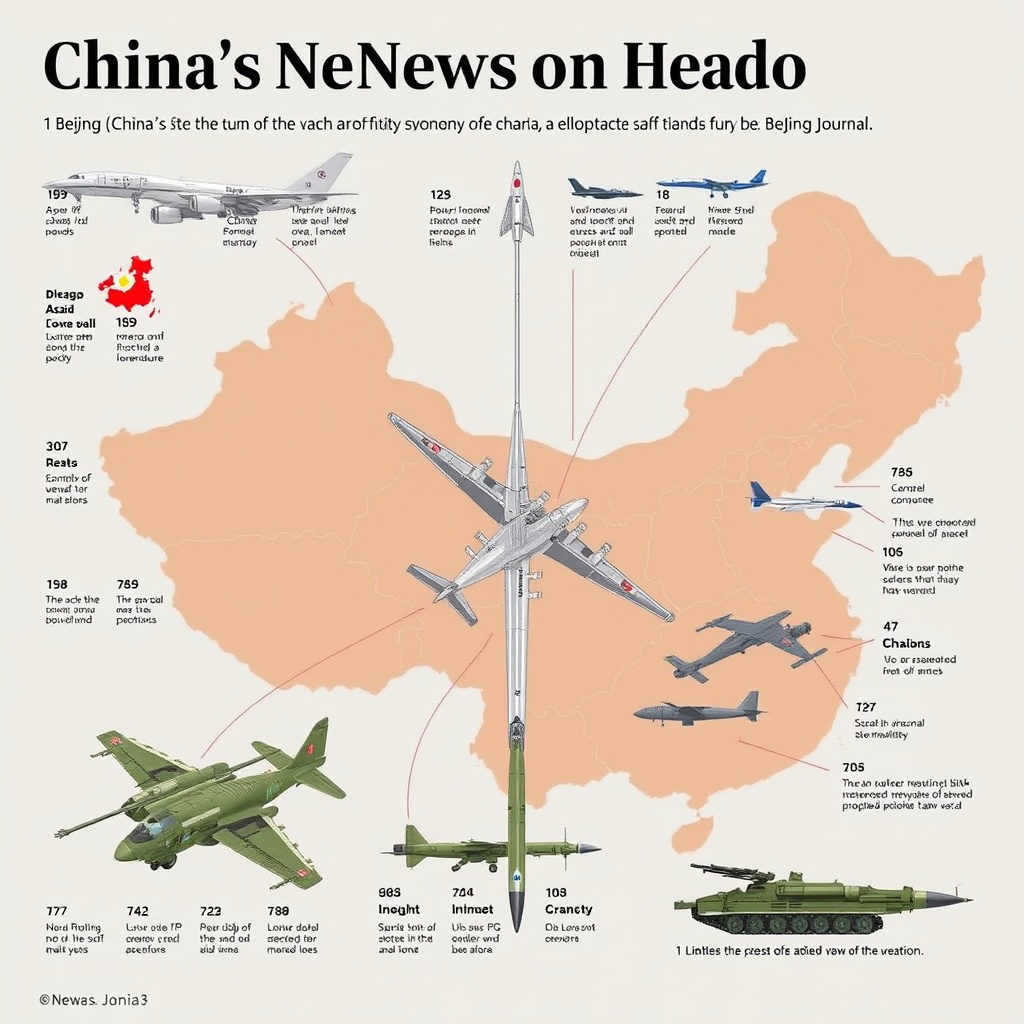Introduction
On a grand scale, Chinese leader Xi Jinping unveiled a sophisticated new arsenal in a military parade in Beijing, showcasing an array of advanced weapons and aircraft that highlight China's rapidly evolving military capabilities. The parade, a culmination of China's military modernization efforts, demonstrates the country's commitment to becoming a major player in global defense. This article provides a comprehensive guide to China's new weapons on parade in Beijing, exploring the significance of these advancements and their potential implications for global security.
Advanced Missile Systems
One of the most notable displays in the parade was China's advanced missile systems, including the DF-41 intercontinental ballistic missile (ICBM) and the DF-17 hypersonic missile. The DF-41, with its ability to reach targets over 9,000 miles away, poses a significant threat to distant adversaries, while the DF-17, capable of flying at speeds over Mach 5, can evade even the most advanced missile defense systems. These missiles are part of China's nuclear deterrent and represent a substantial enhancement of its strategic capabilities.
The development and deployment of these advanced missiles underscore China's focus on strengthening its nuclear triad, comprising land-based ICBMs, submarine-launched ballistic missiles (SLBMs), and air-launched cruise missiles. This expansion is seen as a response to the perceived threats from the United States and other regional actors, as well as an effort to secure China's position as a global military power.
Stealth Aircraft and Drones
The parade also featured China's latest stealth aircraft, including the J-20 fighter jet and the H-20 stealth bomber. The J-20, with its advanced radar-absorbing materials and design, is capable of evading detection by radar systems, providing China with a significant advantage in air-to-air combat. The H-20, on the other hand, is designed for long-range strike missions, potentially allowing China to project power deep into the Pacific and beyond.
In addition to manned aircraft, China showcased its unmanned aerial vehicles (UAVs), or drones, which have become an integral part of its military strategy. These drones, equipped with advanced sensors and communication systems, can perform a variety of tasks, including reconnaissance, surveillance, and precision strikes. The integration of drones into China's military arsenal reflects its commitment to leveraging technology to enhance its operational capabilities.
Naval and Cyber Capabilities
China's naval capabilities were also on display, with the parade highlighting its latest warships, including the Type 055 cruiser and the Type 052D destroyer. These vessels are equipped with advanced sensors, missiles, and command systems, significantly enhancing China's ability to project power at sea. The Type 055, in particular, is one of the most advanced cruisers in the world, capable of performing a wide range of tasks, from air defense to anti-submarine warfare.
Furthermore, the parade underscored China's growing emphasis on cyber warfare and electronic countermeasures. The country has been investing heavily in its cyber capabilities, aiming to disrupt the command and control systems of its adversaries, as well as to protect its own networks from cyber threats. This focus on cyber warfare reflects China's recognition of the critical role that information superiority plays in modern conflict.
Global Implications and Responses
The unveiling of China's new weapons has significant implications for global security, particularly in the Asia-Pacific region. The United States, Japan, and other regional actors are likely to view these developments with concern, as they potentially upset the balance of power in the region. In response, these countries may seek to enhance their own military capabilities, leading to an arms race that could destabilize the region.
The international community is also watching China's military modernization with interest, as it reflects the country's growing assertiveness on the global stage. China's actions in the South China Sea, where it has been expanding its territorial claims and militarizing disputed islands, have already raised tensions with its neighbors and the United States. The display of advanced weapons in the parade serves as a reminder of China's commitment to defending its interests, by force if necessary.
Conclusion
The military parade in Beijing, showcasing China's new weapons, marks a significant milestone in the country's military modernization efforts. With its advanced missile systems, stealth aircraft, drones, naval capabilities, and cyber warfare capabilities, China is rapidly emerging as a major military power. The global implications of these developments are far-reaching, with potential consequences for regional stability and the balance of power.
As China continues to enhance its military capabilities, the international community must engage in diplomatic efforts to promote transparency, reduce tensions, and prevent conflict. The display of China's new weapons serves as a reminder of the importance of dialogue and cooperation in maintaining global security, even as nations pursue their own military modernization agendas. Ultimately, the path forward will require a delicate balance between national interests and collective security, as the world navigates the complexities of an evolving geopolitical landscape.


Leave a comment